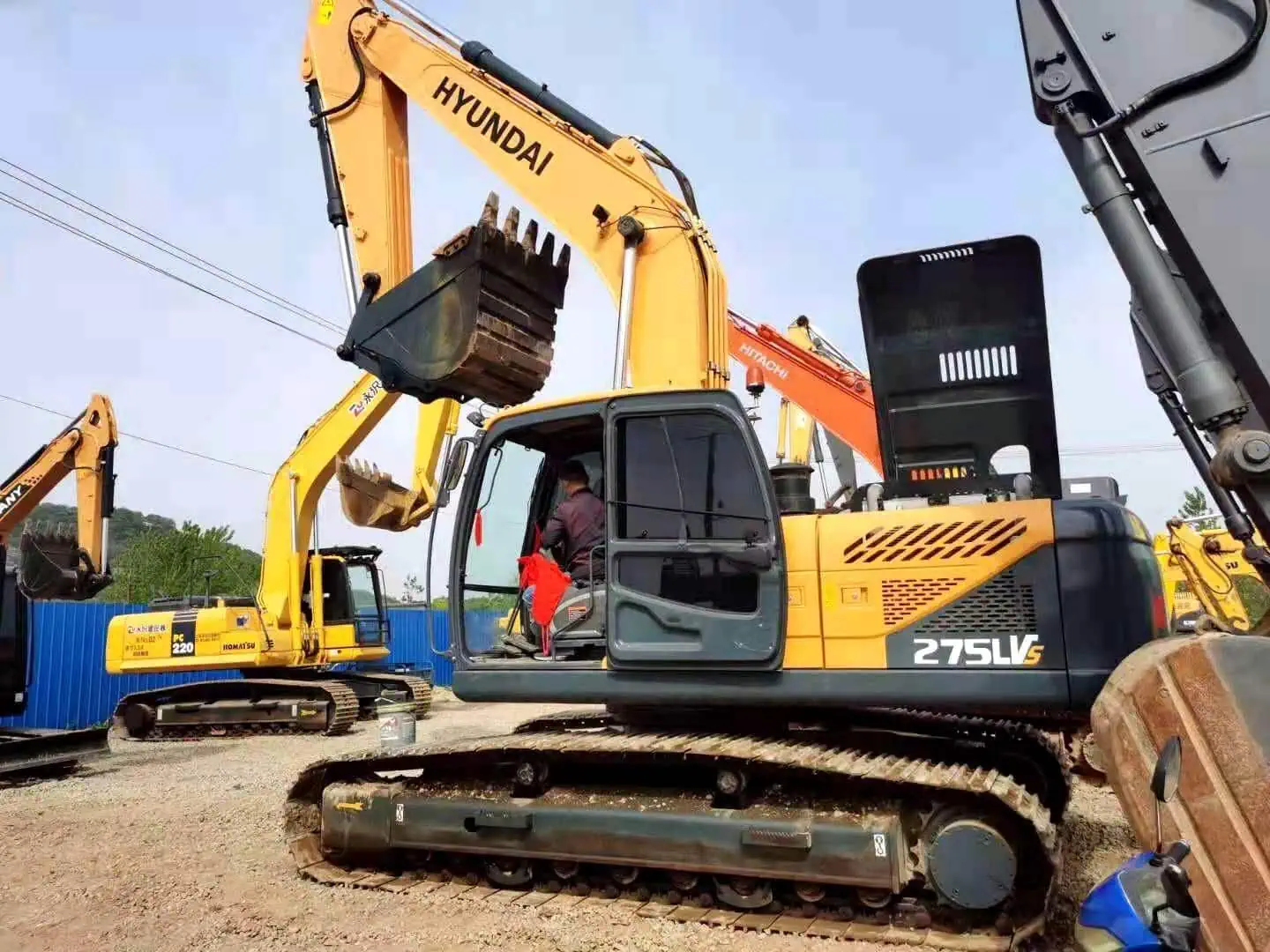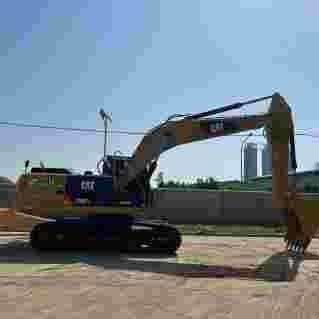It can be overwhelming to choose the right CAT excavator size. Get the wrong size, and you’ll waste time, money, and accomplish less. Many contractors struggle to understand what are the best Caterpillar excavator sizes for their needs, and it can lead to inefficiency. However, don’t worry! In this guide, we’ll help you choose what CAT excavator size is right for you and will give you the power and value you need.
When selecting a Caterpillar excavator, size is crucial. The wrong size can drastically impact your project’s efficiency and budget. Whether you need a mini excavator for small tasks or a large CAT excavator for heavy-duty earthmoving, knowing the differences in CAT excavator sizes will ensure that you pick the right machine for your project’s needs. Understanding the cat excavator for sale options, dimensions, and price ranges will help you make a smart, cost-effective choice.
Now that we’ve covered the importance of size, let’s explore how to choose the right CAT excavator size for your project. Continue reading to find out how each model compares!

Table of Contents
ToggleWhat Are the Different CAT Excavator Sizes and Their Uses?
CAT excavators come in a wide range of sizes, each suited for different tasks and project requirements. Understanding the differences between these sizes will help you make the best decision based on your project’s scale, terrain, and specific needs.
Mini Excavators (Under 6 Tons)
Mini CAT excavators are perfect for small, confined spaces a standard-sized cannot fit. These Caterpillar excavators are great for landscaping, small trenching projects, and light digging jobs. For example, the CAT 305E CR is an excellent choice for jobs in tight areas where a small footprint is essential without sacrificing performance.
Medium-Sized Excavators (6 to 20 Tons)
Medium Cat excavators are the most versatile machines in the industry and are used in general construction work, roadwork, and any mid-range depth of material you need to maneuver. A popular version in this
category is the Cat 320D, offering a balanced match of power, fuel efficiency, and depth of dig. These machines are some of the most widely used excavators in the industry and are used on just about any type of construction project, including utility work, trenching, and lifting.
Large Excavators (20+ Tons)
Large Caterpillar excavators like the CAT 336 and CAT 390 are built for heavy-duty jobs, including mining, major earth-movement projects, and demolition projects. These machines give you greater digging depth, reach, and lifting capacity, making them the choice for large, high-volume work sites. If you have giant trenches to dig or heavy materials to lift, the right type of excavator for you is a big CAT excavator. Again, bigness is relative. For one company, a CAT 336 might look small, while for another company, it’s the biggest thing they’ve ever seen.
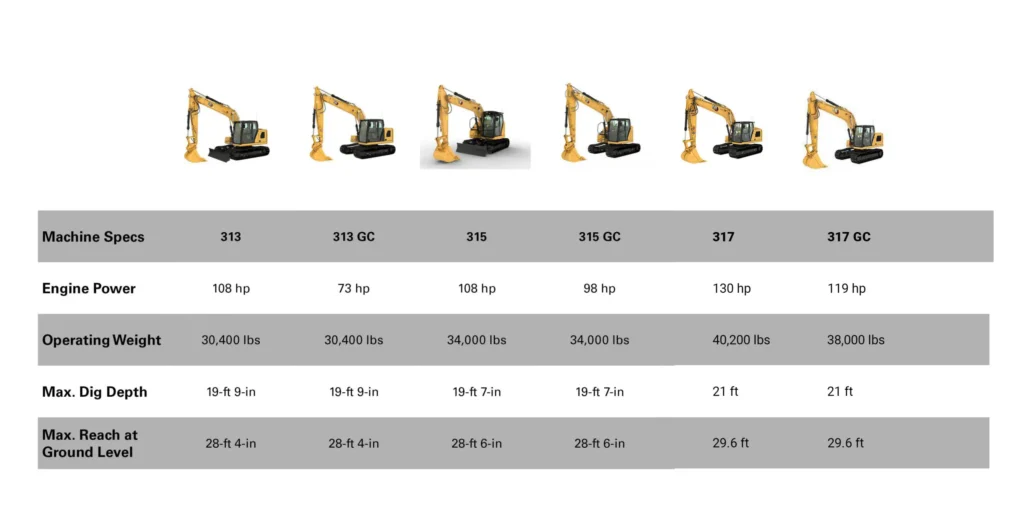
CAT Excavator Size Chart: Dimensions of Popular Models
It’s very important to know these sizes and dimensions to choose the correct model for you. Below is a detailed size chart for popular Caterpillar excavators which can help you compare and understand the size and capability of each model.
| Model | Operating Weight | Dig Depth | Reach | Ideal Use |
| CAT 305E CR | 5.5 tons | 4.2 m | 6.2 m | Small-scale projects |
| CAT 320D | 20 tons | 6.5 m | 9.3 m | General construction |
| CAT 336 | 36 tons | 7.8 m | 10.5 m | Large earthmoving |
| CAT 390 | 90 tons | 9.2 m | 12.8 m | Heavy-duty excavation |
Breakdown of Key Dimensions:
Operating weight is the weight of the excavator including fluids, fuel, operators, and the usual complement of fluids. This weight plays a large role in how much the machine can carry and how mobile or steady it is. For
example, the CAT 305E CR, a mini-excavator, weighs only 5.5 tons, making it very mobile, but it is not rated to carry or pick up much weight.
Digging depth is a specification you need to know, particularly with trenching or other operations requiring a certain depth. The CAT 320D has a 6.5-meter dig depth, which is perfect for most general digging in construction. However, if you need something deeper for mining or larger earthmoving, you might be happier with a CAT 336, which has a 7.8-meter dig depth.
Reach is how far out the arm can extend with either a blade or bucket attached. The reach determines if you will be constantly moving the machine to dig, lift, or grade. The CAT 320D and the CAT 336 are popular models in this area because, while the 320D usually carries a blade, it still has a long reach, allowing it to dig deep trenches without moving constantly. The CAT 336 with a long stick can scoop and reposition itself to pick dirt and lift more, so it doesn’t need to move as often.
How Do CAT Excavator Sizes Affect Price and Performance?
CAT excavator pricing is strongly influenced by size. Size is related to weight and capabilities. CAT excavator prices are related to the massive amount of steel, hydraulics, and mechanical components, as well as the
complexity of the electronic systems and controls. Bigger and heavier machines cost more than lighter, smaller machines. It’s simple: a 320D will be less expensive to buy, transport, and operate than a CAT 385C. However, the CAT 385C typically does jobs faster and with more depth and lifting capacity than a 320D. Let’s go deeper into how CAT excavator sizes impact price and performance.
Price Considerations by Size:
Mini Excavators (Under 6 tons): Mini CAT excavators such as the CAT 305E CR are generally the most affordable. New models can range from$30,000 to $50,000. For small to medium tasks such as landscaping, trenching, and digging small foundations, these excavators are often more than sufficient. Their affordability and lower maintenance costs make them popular for smaller businesses and residential projects.
Medium Excavators(6-20 Tons): This is where machines like the CAT 320D fall. New and used, these machines can range anywhere from $80,000 to $150,000 for a new CAT medium-sized machine depending on attachments, the year, and the condition. The 6-20 ton range is a nice blend of cost and power and is used primarily for general construction, utilities, and building projects.
Large Excavators (20+ tons): CAT 336 and CAT 390 are classified as large excavators and are designed for heavy-duty operations. Their price ranges from $200,000 to over $500,000 for new models. These Caterpillar excavators are built for large-scale earthmoving, mining, and demolition, providing exceptional performance but with significantly higher costs.
Performance Impact by Size:
Mini Excavators are extremely maneuverable and have good fuel efficiency. These are designed for small jobs and can get into tight spaces. Their drawback is they can be limited on performance if you need to do deep digging or heavy lifting
Medium Excavators offer a balance of power and versatility. They are a nice all-around choice because they can handle light jobs but also have the power to dig deeper trenches, handle lifting materials, and other general construction type work.
Large Excavators are engineered for high productivity in tough environments. With their large buckets, extended reach, and big digging depth, these machines are the go-to for massive earthwork and large-scale construction projects. They are more expensive initially, but the long-term performance will more than pay for the investment.
Understanding how CAT excavator sizes affect both the price and performance will help you make a more informed decision about the right excavator for your project.

What Are the Key Features of Popular CAT Excavator Models?
Each model of CAT excavator has different features that make it suitable for various types of projects. Here are the features to consider for some of the popular sizes of Caterpillar Excavators:
CAT 305E CR (Mini Excavator)
- Compact Design: Perfect for tight spaces and small projects.
- Zero Tail Swing: Allows for greater maneuverability in confined areas.
- Fuel Efficient: Known for offering excellent fuel economy, reducing operating costs.
- Attachments: Compatible with various attachments such as augers, breakers, and buckets, enhancing its versatility.
CAT 320D (Medium Excavator)
- Balanced Power and Efficiency: With a fuel-efficient engine and powerful hydraulics, the CAT 320D is well-suited for general construction tasks.
- Advanced Hydraulic System: Improves digging performance and fuel efficiency.
- Operator Comfort: Offers a comfortable cabin with easy controls, helping reduce operator fatigue.
- Versatile Attachments: Can be equipped with various tools like grapples, hammers, and quick couplers.
CAT 336 (Large Excavator)
- Heavy-Duty Performance: Built to handle tough conditions like mining and large earthmoving.
- Advanced Hydraulics: Improves lifting capacity and digging performance for large projects.
- Enhanced Stability: Offers better balance and stability, especially when working on uneven surfaces.
- Extended Reach: Provides greater reach, ideal for tasks like material handling or trenching at a distance.
CAT 390 (Large Excavator)
- Massive Lifting Capacity: Perfect for heavy-duty tasks such as large-scale earthmoving, demolition, and construction.
- Exceptional Reach and Dig Depth: Ideal for deep digging and reaching extended distances.
- Fuel Efficiency: Despite its large size, the CAT 390 is designed to be fuel-efficient, reducing long-term operating costs.
Each of these models is designed with specific projects in mind. You need to understand the features to pick the right model which matches up with the demands of your project.
How Do I Assess the Right Size of CAT Excavator for My Specific Needs?
Choosing the correct CAT excavator size is dependent on several important factors like the scope of the project, jobsite conditions, and budget. Here’s a guide to help you determine which size would be best for your situation.
Project Scale:
For smaller projects like landscaping, trenching, or shallow digging, a mini CAT excavator such as the CAT 305E CR would be ideal. These machines are great for tight spaces and are cost-effective for smaller jobs. For general construction or utility work like digging footings or trenches, a medium CAT excavator like the CAT 320D provides the power and versatility to handle a wide range of tasks including digging, lifting, and trenching. For larger construction projects, earthmoving, or demolition work, a large CAT excavator such as the CAT 336 or CAT 390 would be necessary. These machines are capable of heavy lifting and deep digging.
Site Conditions:
Confined Spaces: Opt for a mini excavator if you’re working in tight, narrow spaces due to their compact size and zero tail swing. Rough Terrain: If you’re dealing with rough or rocky surfaces, you may need a medium or large excavator, which has advanced features to stabilize the machine.
Budget:
ales tax and delivery costs. Don’t forget to consider fuel consumption and servicing costs when you have it. If you are trying to stretch your dollars as far as they will go, start with a medium or mini excavator to cut your acquisition costs without giving up a lot of performance.
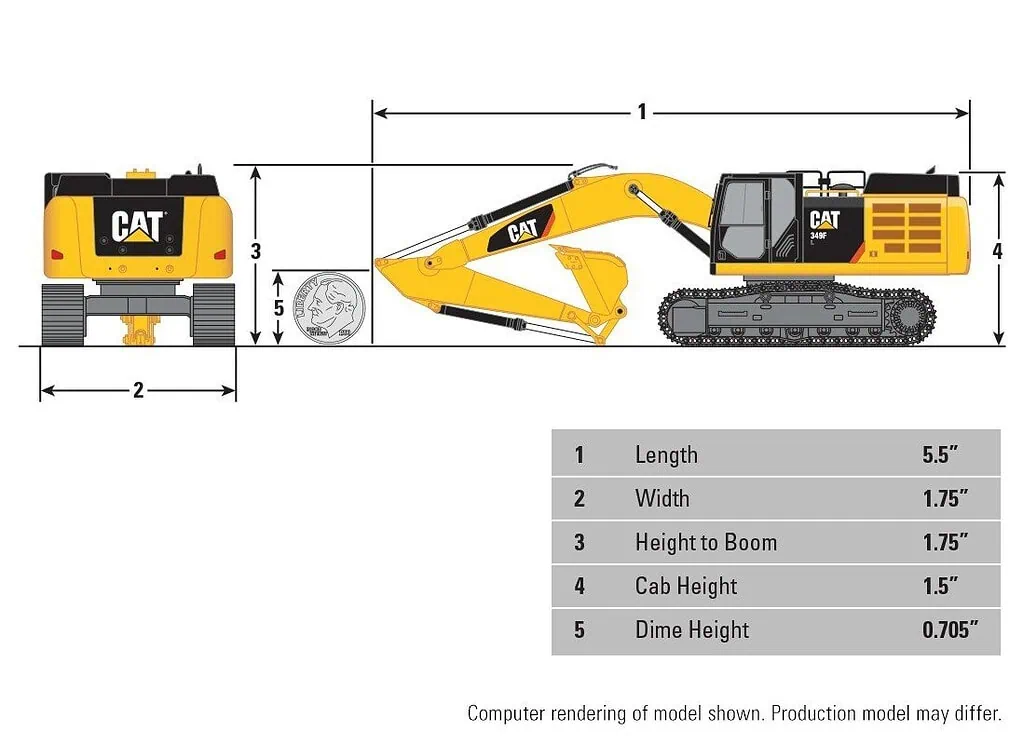
Why Should I Consider CAT Excavators Over Other Brands?
Caterpillar makes a better machine with higher resale value. Their parts, service and support network is better. Caterpillar offers features and benefits that no one else in the market has. If there is no Cat dealer close, then their competition is just as good. The Cat footprint makes a difference.
Proven Durability and Reliability:
Caterpillar excavators are built for performance that lasts, in the toughest conditions. Whether you need to work in desert heat, the mountains, cold or a busy city, our machines are designed to handle the most demanding work.
Global Network:
Caterpillar has a massive dealer and service network, making it easier to maintain and service your machine. You can keep your machine running with less downtime.
Cutting-edge Technology:
Caterpillar introduces cutting edge technology in their excavators. These machines digitally integrate production information and give operators remote access and capability to do real-time analysis leading to better fuel efficiency, reduced emissions, and improved operating productivity.
Resale Value:
CAT excavators maintain their value better than other brands, so they are a good long-term investment. If you decide to sell your machine down the road, you can expect to get more money for it.
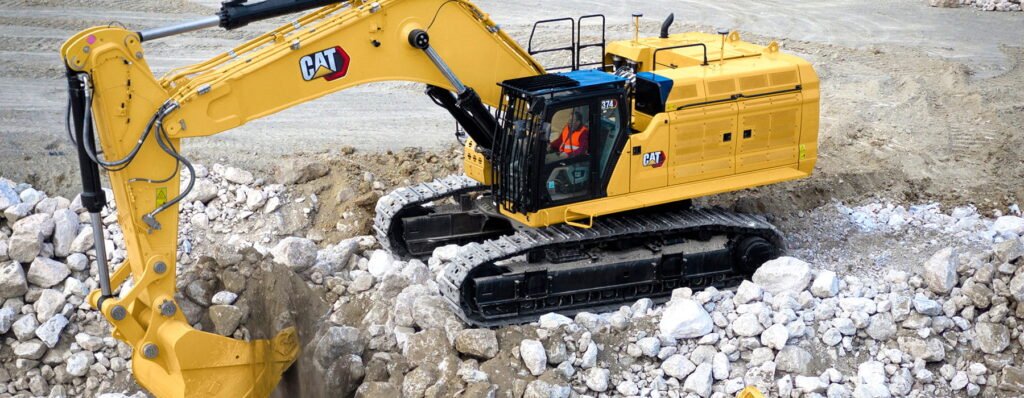
How Can I Find the Best Deals on CAT Excavators for Sale?
Finding the best deals on CAT excavators for sale involves careful research and strategic shopping. Whether you’re looking for new or used Caterpillar excavators, these tips can help you secure the best price without compromising quality:
Authorized Dealers:
CAT’s authorized dealers are often the best place to find new machines. They come with warranties and you get all the support and service you would expect from a company like Caterpillar. CAT dealerships will also have official used equipment that has been inspected and deemed safe for continued use. While you will likely pay a little more buying from a dealership, there are benefits. Dealerships may have financing opportunities as well as trade-in programs, which can make financing your project easier. While these machines are often more expensive, you may get a better machine that has been well cared for and will likely come with detailed service records.
Online Marketplaces:
Websites such as Alibaba, Made-in-China, and MachineryTrader all offer used CAT excavators and, in some cases, may give you a competitive advantage. Alibaba and Made-in-China often link you directly to the manufacturer in China, allowing you to bypass any middlemen, which is great. These websites also offer a wide range of models and allow you to choose from sellers all over the world. However, caution must be exercised when buying from these sites.
Auction Sites:
Auctions are a great place to find Caterpillar excavators, often at a much lower price. Auction websites such as Ritchie Bros. and IronPlanet frequently offer used CAT excavators from reputable sources. Just keep in mind that when you buy a CAT excavator at an auction, it is being sold to you ‘as is.’ You need to inspect the excavator in person before you bid, because there could be hidden problems with the machine. If you don’t physically inspect it, you could receive a CAT excavator that costs you a fortune in repairs.
What Are the Benefits of Buying a Used CAT Excavator?
Purchasing a used CAT excavator can provide significant benefits, especially if you’re working within a budget. Here’s why a used Caterpillar excavator may be the right option for your project:
Cost Savings:
The only major downside to buying a used CAT excavator is that you may not have as much customization or choice in the machine’s specifications. If you need a machine with specific options or features, you may have to wait until one shows up on the used market. However, if you can be flexible with your machine’s specifications and don’t need all the latest features, you can get a great deal on a used CAT excavator that will help you be productive for years to come.
Proven Durability:
The only big drawback to CAT machines is that perhaps you cannot get so picky about your specific machine. If you need a machine with specific options or capabilities, you might have to wait for a used one to come along with all the things you want. If you can be flexible and do not need all the latest technology and features, you can find an excellent deal on a used CAT excavator that will help you make money for a long time.
Lower Depreciation:
The only big drawback to CAT machines is that perhaps you can’t get so picky about your specific machine. If you need a machine with specific options or capabilities, you may have to wait for a used one to come along with all the things you want. If you can be flexible and don’t need all the latest technology and features, you can find an excellent deal on a used CAT excavator that can help you make money for a long time.
In conclusion, buying a used CAT excavator can offer a wide range of benefits, including lower initial costs, reliability, and value retention. Just ensure that you purchase from a reputable dealer who can guarantee the machine’s condition and provide after-sales support.

Conclusion
Select the right size of CAT excavator for your specific needs, and base that decision on the size of your project among other considerations. If you understand the different sizes, features and how each impacts your project’s performance, you won’t have to guess which CAT excavator size is the right one for your project or whether the mini excavator is the best choice or you should go bigger.please feel free to contact our staff. Our team is always ready to solve your problems.





